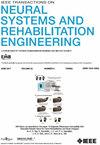Adaptive Neurofeedback Training Using a Virtual Reality Game Enhances Motor Imagery Performance in Brain–Computer Interfaces
IF 5.2
2区 医学
Q2 ENGINEERING, BIOMEDICAL
IEEE Transactions on Neural Systems and Rehabilitation Engineering
Pub Date : 2025-07-28
DOI:10.1109/TNSRE.2025.3592988
引用次数: 0
Abstract
Neurofeedback training (NFT) has been widely used in motor rehabilitation. However, NFT combined with motor imagery-based brain-computer interface (MI-BCI) faces challenges such as mental fatigue and non-personalized training strategies. Therefore, we proposed an adaptive NFT based on a VR game that simulates real-life motor tasks to improve training efficiency. We conducted a detailed comparative analysis of the efficiency of the VR-based NFT and traditional Graz-based NFT. Forty-eight healthy subjects were randomly assigned to five groups and underwent various NFT protocols. Among them, the subjects in the four experimental groups were required to perform the NFT three times over five days, including virtual or real scenarios, as well as unilateral or bilateral hands training. We evaluated training effects by analyzing EEG features and classification performance, while online recognition duration served as the primary measure for assessing the adaptive NFT strategy. EEG analysis showed that VR-based NFT significantly enhanced the Event-related desynchronization (ERD) activations in the sensorimotor cortices over five days. The VR-based NFT group achieved a classification accuracy of 81.85%, representing a 10.14% improvement from baseline, which exceeded the 6.43% increase observed in the Graz-based NFT group. Furthermore, implementing the adaptive NFT strategy reduced the mean task duration by over 30% compared to the fixed-time training protocol. The results demonstrated that the adaptive MI-BCI-based NFT in a VR game achieves superior training outcomes while reducing training duration. These findings suggest the promising potential for applying MI-BCI NFT with VR games in motor rehabilitation following a stroke.使用虚拟现实游戏的自适应神经反馈训练增强脑机接口的运动图像性能。
神经反馈训练(NFT)在运动康复中得到了广泛应用。然而,NFT与基于运动图像的脑机接口(MI-BCI)相结合面临着精神疲劳和非个性化训练策略等挑战。因此,我们提出了一种基于VR游戏的自适应NFT,模拟现实生活中的运动任务,以提高训练效率。我们对基于vr的NFT和传统的基于grazi的NFT的效率进行了详细的比较分析。48名健康受试者被随机分为5组,并接受了不同的NFT方案。其中,四个实验组的受试者被要求在五天内进行三次NFT,包括虚拟或真实场景,以及单侧或双侧手部训练。我们通过分析脑电特征和分类性能来评估训练效果,而在线识别持续时间作为评估自适应NFT策略的主要指标。脑电图分析显示,基于虚拟现实的NFT在5天内显著增强了感觉运动皮层的事件相关去同步(ERD)激活。基于vr的NFT组实现了81.85%的分类准确率,比基线提高了10.14%,超过了基于grazenft组观察到的6.43%的增幅。此外,与固定时间训练方案相比,实施自适应NFT策略将平均任务持续时间减少了30%以上。结果表明,基于mi - bci的自适应NFT在缩短训练时间的同时取得了较好的训练效果。这些研究结果表明,将MI-BCI NFT与VR游戏应用于中风后的运动康复有很大的潜力。
本文章由计算机程序翻译,如有差异,请以英文原文为准。
求助全文
约1分钟内获得全文
求助全文
来源期刊
CiteScore
8.60
自引率
8.20%
发文量
479
审稿时长
6-12 weeks
期刊介绍:
Rehabilitative and neural aspects of biomedical engineering, including functional electrical stimulation, acoustic dynamics, human performance measurement and analysis, nerve stimulation, electromyography, motor control and stimulation; and hardware and software applications for rehabilitation engineering and assistive devices.

 求助内容:
求助内容: 应助结果提醒方式:
应助结果提醒方式:


